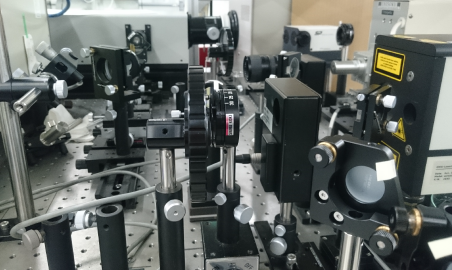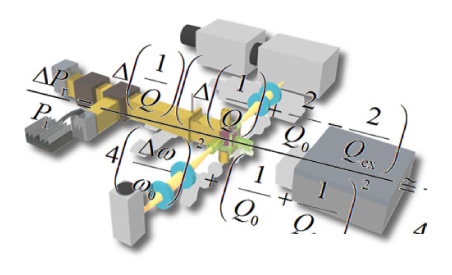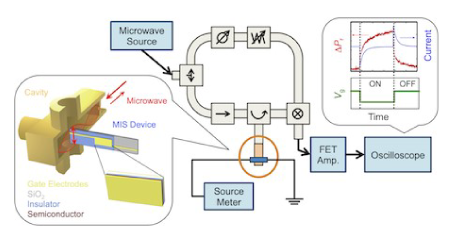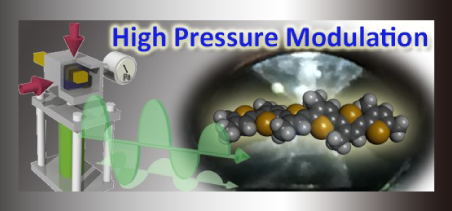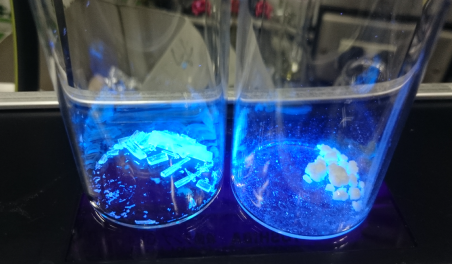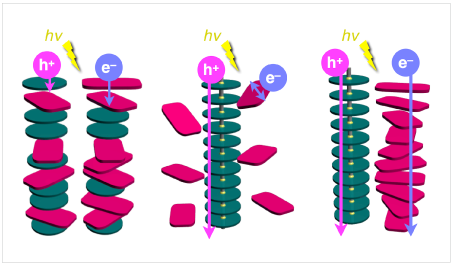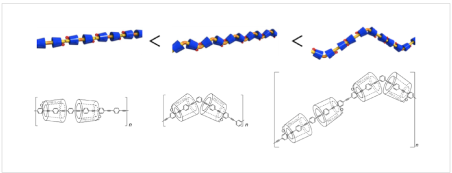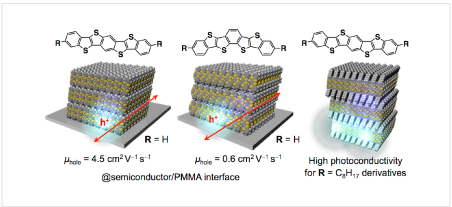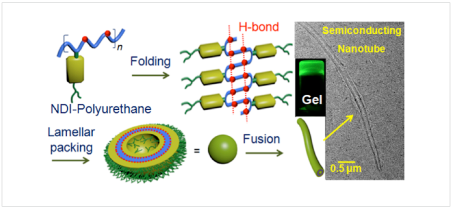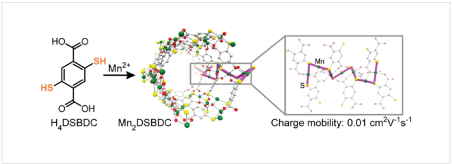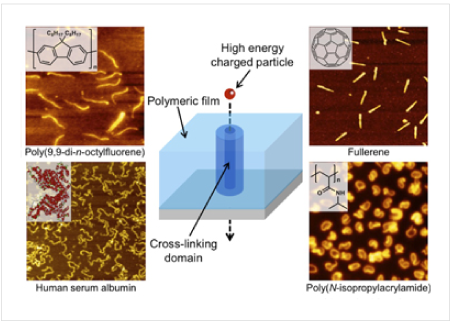Our group has joint research projects with other groups that focus on the development of new materials.
By means of our FP- or FI-TRMC techniques as well as transient absorption spectroscopy, we evaluated charge carrier transporting property of such newly-developed materials.
As recent representative works, for example, we evaluated, through FP-TRMC/TAS combined method, the charge carrier mobility of polyrotaxane-based materials composed of semiconducting phenylene-ethynylene wires isolated by insulating cyclodextrin covers.
Self-assembled polymers and supramolecular materials are of interest for our study of clarifying the relationship between structure and semiconducting property.
On the other hand, by using FI-TRMC technique, we studied the local-scale charge carrier mobility of π-extended acene- and heteroacene-based thin films at the semiconductor–insulator interfaces.
Furthermore, recently we tried to evaluate the charge carrier transporting property of MOFs, COFs, and PCPs that have not been used for semiconductors.
In particular, crystalline thin films developed by crystal growth on substrates are the potential targets for the precise evaluation.
Organic Semiconductor, π-Conjugated Molecules, Microwave, Charge Carrier Mobility, One-Dimensional, Two-Dimensional
J. Terao, A. Wadahama, A. Matono, T. Tada, S. Watanabe, S. Seki, T. Fujihara, and Y. Tsuji
Design principle for increasing charge mobility of π-conjugated polymers using regularly localized molecular orbitals
T. Mondal, T. Sakurai, S. Yoneda, S. Seki, and S. Ghosh
Semiconducting Nanotubes by Intrachain Folding Following Macroscopic Assembly of a Naphthalene-Diimide (NDI) Appended Polyurethane
Y. Tsutsui, T. Sakurai, S. Minami, K. Hirano, T. Satoh, W. Matsuda, K. Kato, M. Takata, M. Miura and S. Seki
Evaluation of Intrinsic Charge Carrier Transporting Properties of Linear- and Bent-Shaped π-Extended Benzo-Fused Thieno[3,2-b]thiophenes
J. Guo, Y. Xu, S. Jin, L. Chen, T. Kaji, Y. Honsho, M. A. Addicoat, J. Kim, A. Saeki, H. Ihee, S. Seki, S. Irle, M. Hiramoto, J. Gao, and D. Jiang
Conjugated organic framework with three-dimensionally ordered stable structure and delocalized π clouds" Nature Commun.
J. Liu, W. Zhou, J. Liu, I. Howard, G. Kilibarda, S. Schlabach, D. Coupry, M. Addicoat, S. Yoneda, Y. Tsutsui, T. Sakurai, S. Seki, Z. Wang, P. Lindemann, E. Redel, T. Heine, and C. Wöll
Photoinduced Charge Carrier Generation in Epitaxial MOF Thin Films: High Efficiency as a Result of an Indirect Band Gap?
L. Sun, T. Miyakai, S. Seki, and M. Dinca
Mn2(2,5-disulfhydrylbenzene-1,4-dicarboxylate): A Microporous Metal−Organic Framework with Infinite (−Mn−S−)∞ Chains and High Intrinsic Charge Mobility

